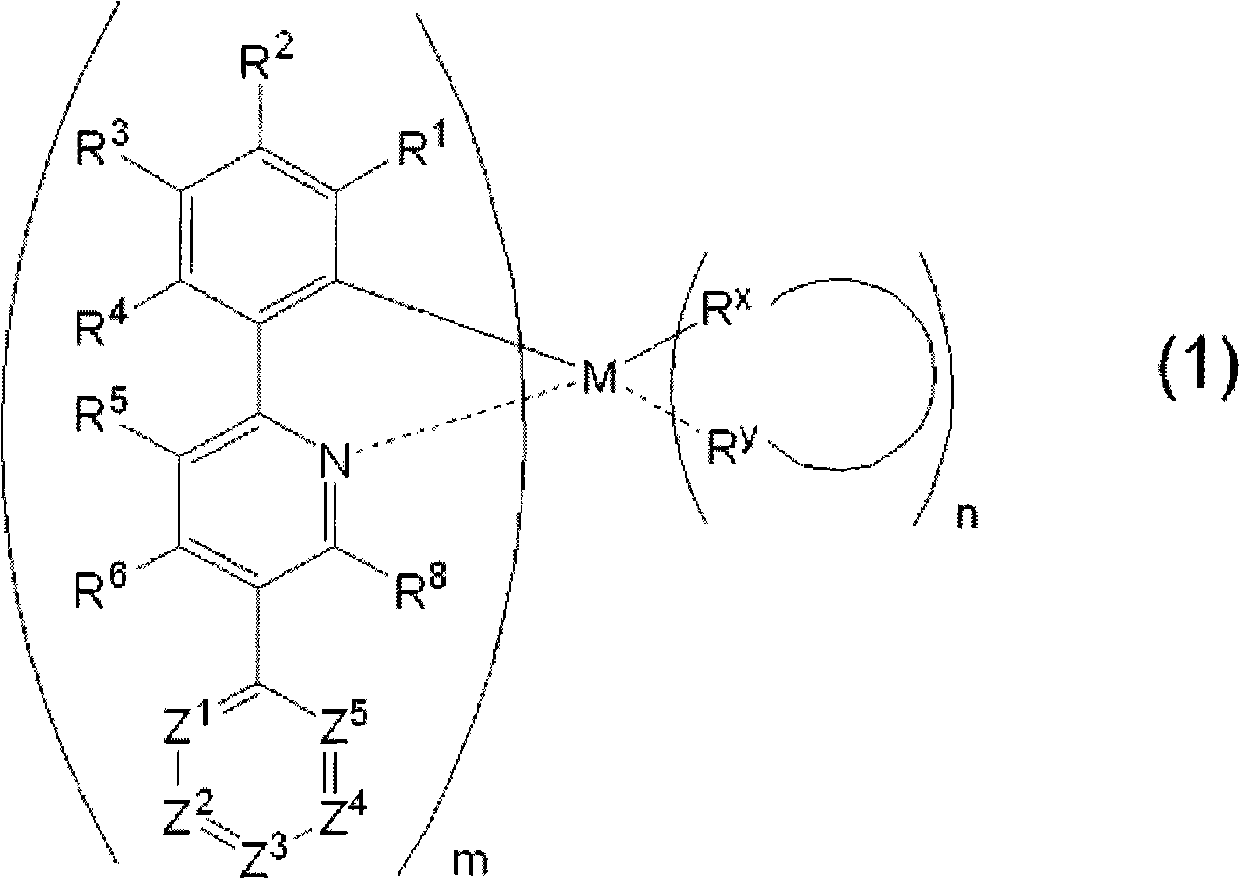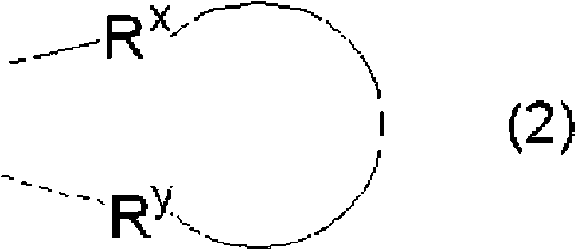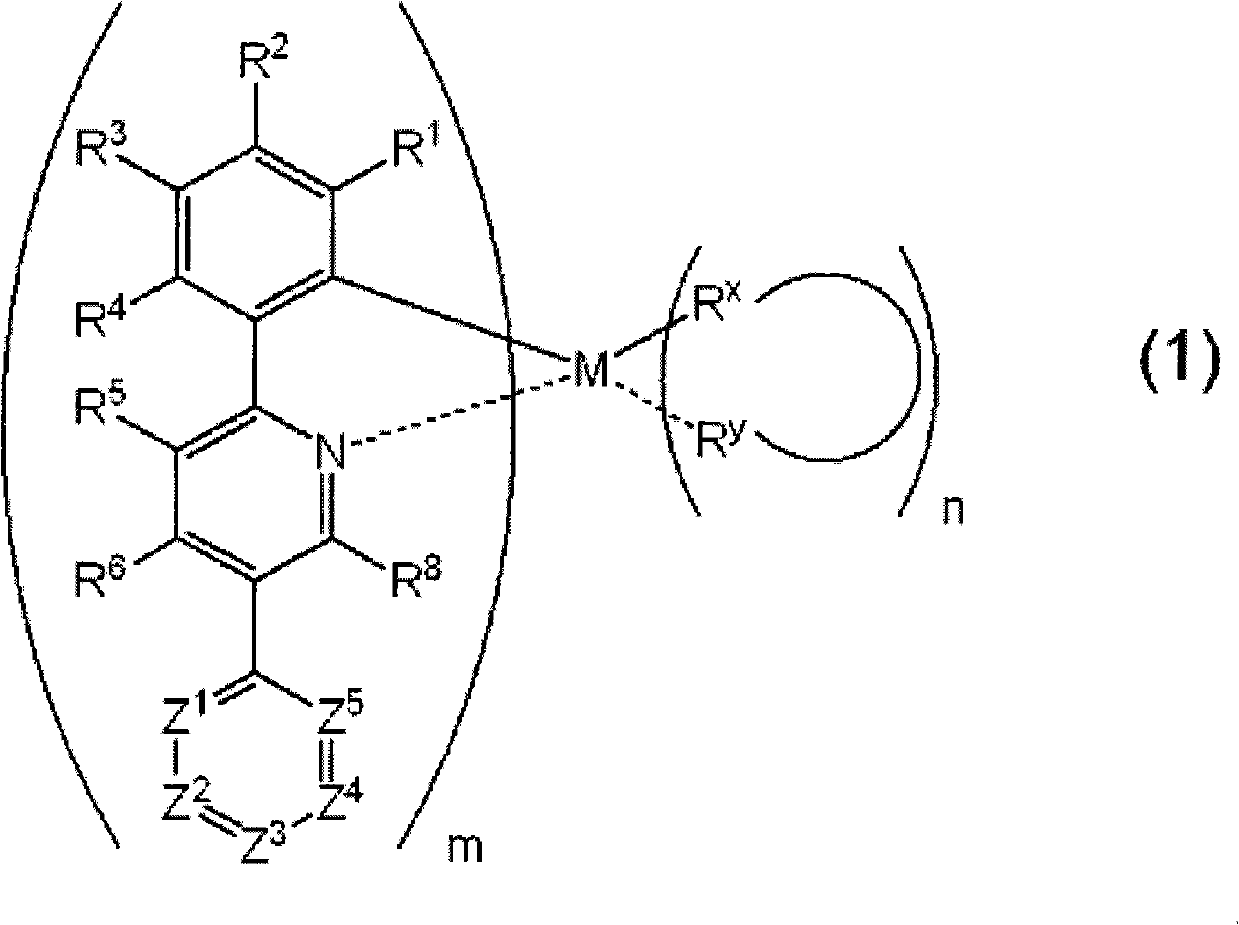Polymeric compound containing metal complex residue and element comprising same
A technology of polymer compounds and metal complexes, which is applied in the fields of electrical components, organic chemistry, chemical instruments and methods, etc., and can solve the problems of not being able to obtain components with luminous efficiency
- Summary
- Abstract
- Description
- Claims
- Application Information
AI Technical Summary
Problems solved by technology
Method used
Image
Examples
Synthetic example 1
[0312] (Synthesis of Metal Complex (MC-5))
[0313] [synthetic method 1]
[0314] ·Synthesis of 5-bromo-2-phenylpyridine
[0315] In a reaction vessel, measure 2,5-dibromopyridine (7.11 g, 30 mmol), toluene (130 mL), phenylboronic acid (4.57 g, 37.5 mmol) and tetrakis(triphenylphosphine)palladium(0) (1.73 g , 1.5 mmol), under nitrogen flow, dissolve the reactants while stirring at 50°C. A 2M aqueous sodium carbonate solution (30 mL) was added thereto, followed by stirring at 80°C for 6 hours. The organic layer of the obtained reaction solution was recovered, and washed with an aqueous sodium carbonate solution and saturated brine. The organic layer was dried over sodium sulfate, filtered, and distilled off. The residue was purified by silica gel column chromatography (hexane / toluene), and the solvent was distilled off to obtain 5-bromo-2-phenylpyridine (6.21 g, 26.5 mmol).
[0316] Synthesis of metal complexes (complex 1 and 2)
[0317]
[0318] In a reaction vessel, m...
Embodiment 1
[0349] (Synthesis and evaluation of polymer compound 1)
[0350] Synthesis of metal complexes (MC-6, and MC-7)
[0351]
[0352] Under an argon flow, the metal complex (MC-5, 2.03 g, 1.20 mmol) and dichloromethane (200 mL) obtained in Synthesis Example 1 were weighed in a reaction container to dissolve the metal complex. N-bromosuccinimide (221 mg, 1.24 mmol) was added thereto, and stirred at room temperature for 4 hours. The solvent was distilled off, and toluene (50 mL) was added to the residue to dissolve it. This toluene solution was purified by silica gel chromatography (developing solvent: toluene). The eluted solution was recovered, and the solvent was distilled off, and a hexane / toluene (2 / 1) mixed solution (400 mL) was added to the residue to dissolve it. This solution was purified again by silica gel chromatography (developing solvent: hexane / toluene=2 / 1). The second eluted component was recovered, and the residue was washed with methanol after distilling off...
Embodiment 2
[0368] (synthesis and evaluation of polymer compound 2)
[0369] Under an inert atmosphere, 2,7-bis(1,3,2-dioxaborolan-2-yl)-9,9-dioctylfluorene (0.53g), 2,7-dibromo-9 , 9-dioctylfluorene (0.16g), 2,7-dibromo-9,9-dihexylfluorene (0.20g), bis(4-bromophenyl)-(4-sec-butylphenyl)- Amine (0.092g), metal complex (MC-7) (0.18g), Aliquat336 (0.13g, manufactured by Aldrich), bis(triphenylphosphine)palladium dichloride (0.7mg), and toluene (26ml) were mixed , heated to 105°C. 2M Na was added dropwise to the reaction solution 2 CO 3 Aqueous solution (10ml), refluxed for 4 hours. After the reaction, phenylboronic acid (0.12 g) was added, followed by heating at 105° C. for 5 hours. After cooling, it was washed three times with 3% by weight aqueous acetic acid (20 ml) and three times with water (20 ml), and purified by passing through an alumina column and a silica gel column. The obtained toluene solution was added dropwise to methanol (200 ml), and after stirring for 1 hour, the re...
PUM
| Property | Measurement | Unit |
|---|---|---|
| Maximum luminous efficiency | aaaaa | aaaaa |
| Maximum luminous efficiency | aaaaa | aaaaa |
| Maximum luminous efficiency | aaaaa | aaaaa |
Abstract
Description
Claims
Application Information
 Login to View More
Login to View More - R&D
- Intellectual Property
- Life Sciences
- Materials
- Tech Scout
- Unparalleled Data Quality
- Higher Quality Content
- 60% Fewer Hallucinations
Browse by: Latest US Patents, China's latest patents, Technical Efficacy Thesaurus, Application Domain, Technology Topic, Popular Technical Reports.
© 2025 PatSnap. All rights reserved.Legal|Privacy policy|Modern Slavery Act Transparency Statement|Sitemap|About US| Contact US: help@patsnap.com



